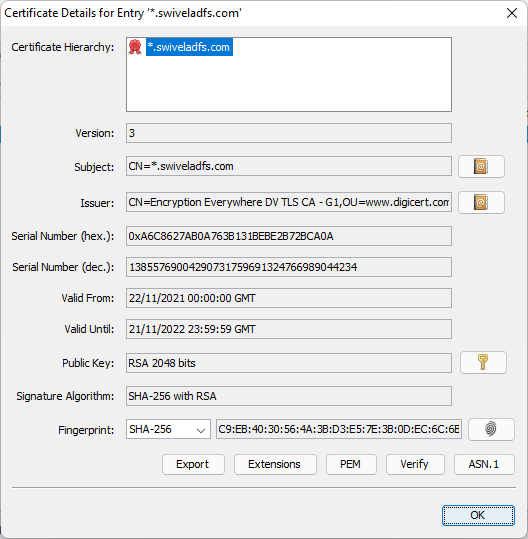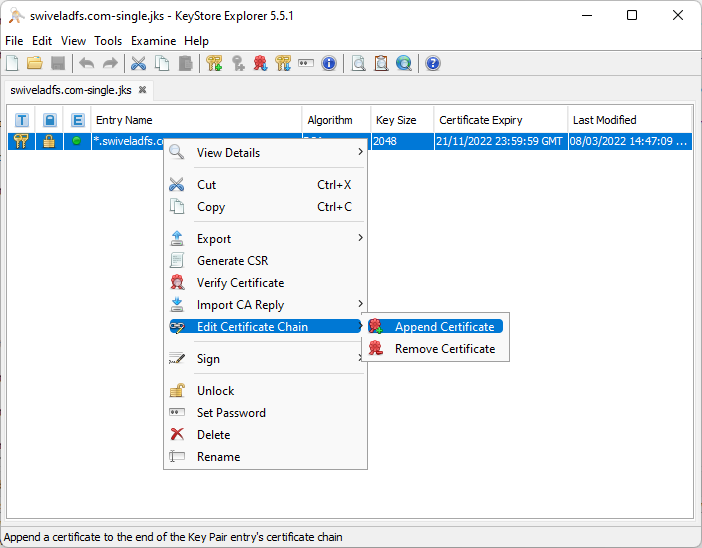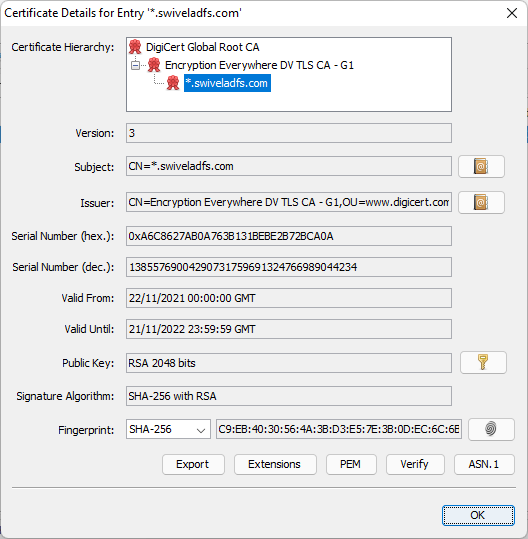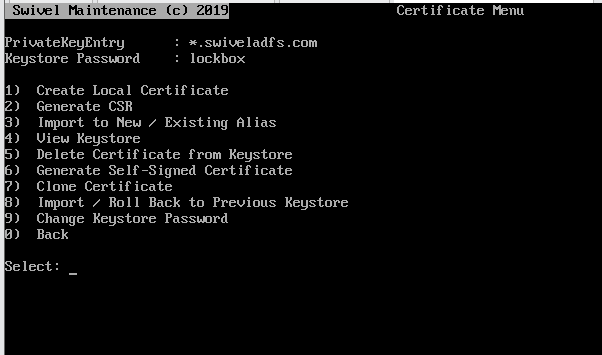Certificate for Mobile App
Introduction
Some versions of Swivel Secure's mobile apps will not connect to the Sentry appliance unless the entire certificate chain is in the keystore as a single entry. This document describes how to achieve that.
Requirements
You will need:
- The keystore from your Sentry appliance, including the signed certificate
- A copy of Keystore Explorer.
- The intermediate certificate(s) and root certificate from your certificate authority. You should be able to get these from their website.
If you have not yet installed your certificate in the keystore, Keystore Explorer can do that for you as well, but this document assumes the certificate is installed but without any chain.
You can access your current keystore from your appliance in the following location:
/home/swivel/.keystore
Use WinSCP or Filezilla to download this file to a local Windows machine.
Updating the Certificate
Open Keystore Explorer, then open the copy of the keystore using File, Open. Note that you will need to know the password for your keystore.
There may be other entries shown, if you have imported the intermediate certificates as separate entries (trusted certificates). The server certificate is the one with the double-key icon next to it.
To confirm that the certificate doesn't already have a chain, double-click on the certificate:
Now you need to append the intermediate certificate(s) and root certificate. This must be done in the correct order, starting with the immediate signing certificate and ending with the root. If you select the wrong certificate, the operation will fail.
Right-click on the certificate, then click "Edit Certificate Chain", then "Append Certificate"
You will need to enter the password again (only once, no matter how many intermediate certificates there are).
Select the intermediate certificate from the file dialog. Assuming you selected the right intermediate certificate, you will see the message "Append Certificate Successful".
Once you have added all the certificates, double-click on the certificate entry again to confirm that there is a chain of certificates:
Save this modified keystore.
Installing the Keystore
To install the modified keystore, you will need to upload it to the folder /backups/upload on the appliance.
On the appliance console, go to the Tomcat menu, then Certificates:
Now select "Import / Roll Back to Previous Keystore":
Select your modified keystore from the menu, then enter Y to confirm you want to overwrite the keystore.
In order to activate the new keystore, you will need to restart Tomcat. If you want to check the certificate before restarting Tomcat, enter N not to restart Tomcat, then choose the option "View Keystore" then the appropriate certificate to check the certificate. You should see the Certificate chain length of 3, assuming there is just one intermediate certificate. If the length is 1, then you have not added the intermediates correctly.
When you are satisfied, restart Tomcat to activate the new certificate.





